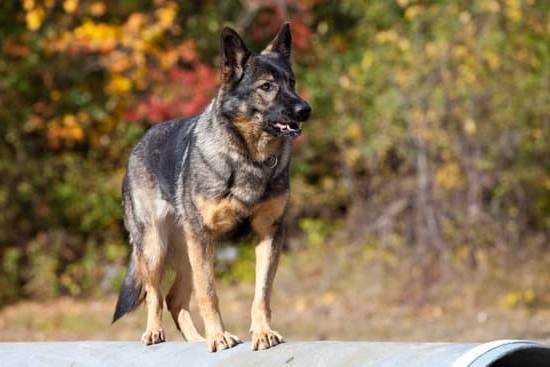When it comes to training your furry friend, finding the best dog training treats is essential for effective and successful training sessions. Whether you’re teaching your pup basic commands or more advanced tricks, using the right treats can make all the difference in their learning process.
In this comprehensive guide, we will delve into the importance of dog training treats and how they play a crucial role in positive reinforcement and reward-based training. We’ll also provide tips and considerations for choosing the right type of treats for your canine companion, as well as a detailed review and comparison of the top 10 best dog training treats available on the market.
Additionally, we will explore homemade dog training treat recipes and step-by-step guides for those who prefer to create their own treats at home. Avoiding common mistakes when using training treats and effectively using them in different training scenarios will also be covered in this article. So, whether you’re a new pet parent or an experienced trainer, this guide is your go-to resource for finding the perfect training treats for your beloved furry friend.
Choosing the Right Type of Treats for Training
When it comes to choosing the right type of treats for training, there are several tips and considerations to keep in mind. The best dog training treats are those that motivate and engage your furry friend while also being healthy and safe for consumption. Here are some important factors to consider when selecting treats for training.
Quality Ingredients
One of the most important considerations when choosing training treats for your dog is the quality of ingredients. Look for treats made with high-quality, natural ingredients that are free from artificial additives, preservatives, and fillers. Treats made with real meat, such as chicken, beef, or fish, are often very appealing to dogs and can be highly effective for training purposes.
Size and Texture
The size and texture of the treats you choose can also make a difference in their effectiveness during training sessions. Small, soft treats that can be easily broken into smaller pieces are ideal for quick rewards during training. Additionally, considering the texture of the treat is important as well; some dogs prefer softer treats while others may enjoy crunchier options.
Nutritional Value
It’s crucial to consider the nutritional value of the treats you use for training. While it’s okay to indulge your pet with tasty rewards during training sessions, it’s important not to overdo it with unhealthy snacks. Look for treats that are low in calories and fat but high in protein – this will help keep your dog healthy while still being rewarding during training.
By keeping these tips and considerations in mind when choosing dog training treats, you can ensure that you’re providing your furry friend with the best possible rewards during their training sessions. These thoughtful choices will not only help them learn more effectively but also contribute to their overall health and well-being.
The Science Behind Positive Reinforcement and Reward-Based Training
Positive reinforcement and reward-based training have been proven to be the most effective methods for training dogs. By understanding the science behind these techniques, dog owners can better comprehend why using the best dog training treats plays a crucial role in shaping their pet’s behavior.
Understanding Positive Reinforcement
Positive reinforcement involves rewarding your dog for exhibiting desirable behaviors. When a dog performs a command correctly, they are given a treat as a reward. This creates a positive association with the behavior, making them more likely to repeat it in the future. The use of treats as rewards helps reinforce the connection between the action and the consequence, making it more likely that your furry friend will continue to follow commands.
The Role of Dopamine
When dogs receive a treat after performing a task, their brain releases dopamine, a neurotransmitter associated with pleasure and reward. This reinforces the desired behavior and makes it more likely to be repeated. Understanding this process can help dog owners appreciate why using high-quality, tasty treats is essential for effective training. It’s important to choose treats that are not only appealing but also healthy for your pet, ensuring they receive an appropriate reward for their efforts.
The Importance of Timing
In order for positive reinforcement to be effective, timing is crucial. Treats must be given immediately after the desired behavior is performed, so that dogs can make a clear connection between their actions and the reward. This reinforces the behavior and increases the likelihood of them repeating it in similar circumstances. Therefore, selecting the best dog training treats that are easy to handle and dispense quickly is paramount in ensuring effective positive reinforcement during training sessions.
Top 10 Best Dog Training Treats
When it comes to training your furry friend, using the best dog training treats is essential for a successful and enjoyable experience. With so many options available on the market, it can be overwhelming to choose the right one for your pet. In this section, we will provide a detailed review and comparison of the top 10 best dog training treats to make your decision-making process easier.
To help you understand why these treats made it to our list of top 10, we have carefully considered factors such as quality, ingredients, effectiveness in training, and overall value for money. Here is a detailed review and comparison of each of these top 10 best dog training treats:
- Blue Buffalo Blue Bits Training Dog Treats
- Wellness Core Pure Rewards Jerky Bites
- Zuke’s Mini Naturals Training Dog Treats
- Merrick Power Bites Dog Treats
- Pet Botanics Training Rewards
- Rocco & Roxie Gourmet Jerky Dog Treats
- Crazy Dog Train-Me. Training Reward Mini Dog Treats
- Stewart Pro-Treat Freeze-Dried Liver Dog Treats
- Fruitables Skinny Minis Chewy Dog Treats
- Plato Pet Treats Thinkers Salmon Sticks
Each of these top 10 best dog training treats has its unique features, flavors, and benefits that cater to different dogs’ needs and preferences.
Whether your furry friend is a picky eater or has specific dietary restrictions, there is an option from our list that will surely suit their taste buds while effectively aiding in their training sessions.
Homemade Dog Training Treats
When it comes to training your furry friend, homemade dog training treats can be an excellent option. Not only do they allow you to control the ingredients and ensure your dog is getting a healthy snack, but they can also be less expensive than store-bought options. Here are a few simple recipes and step-by-step guides for making homemade dog training treats.
One popular option is to make peanut butter and banana treats. These can be made by mashing up a ripe banana and mixing it with natural peanut butter. Then, add in some oats and whole wheat flour to form a dough. Roll out the dough and cut it into small pieces before baking until they are crispy.
Another great homemade treat is frozen yogurt drops. Simply mix plain, unsweetened yogurt with a mashed sweet potato or pumpkin puree. Then, spoon small dollops onto a baking sheet and freeze until solid. These frozen treats are perfect for hot days or as a refreshing reward after a training session.
For those who prefer no-bake options, try making carrot and apple pupcakes. Grate carrots and apples before mixing them with oat flour or coconut flour to create a batter. Spoon the batter into mini cupcake tins and bake until firm. These pupcakes can be stored in the fridge for several days or frozen for longer storage.
| Homemade Dog Training Treat Recipe | Ingredients |
|---|---|
| Peanut Butter Banana Treats | Ripe banana, natural peanut butter, oats, whole wheat flour |
| Frozen Yogurt Drops | Plain unsweetened yogurt, sweet potato or pumpkin puree |
| Carrot Apple Pupcakes | Grated carrots, grated apples, oat flour or coconut flour |
Avoiding Common Mistakes When Using Training Treats
Training treats are an essential tool in reinforcing positive behavior and teaching your furry friend new tricks. However, there are common mistakes that dog owners make when using training treats that can hinder the training process. One of the most common mistakes is using low-quality treats that are not enticing enough for your dog. It’s important to choose high-quality and tasty treats that will keep your dog motivated and engaged during training sessions.
Another mistake to avoid is overfeeding your dog during training. It’s easy to get carried away with giving too many treats, especially when you’re eager to see results. Overfeeding can lead to weight gain and unhealthy eating habits for your dog. Be sure to use small, bite-sized treats and consider adjusting your dog’s daily food portions to accommodate the extra calories from the training treats.
Additionally, timing is crucial when using training treats. Some owners make the mistake of giving a treat too late or too early, which can confuse their dog or reinforce the wrong behavior. It’s important to reward your dog immediately after they exhibit the desired behavior to ensure they understand what they are being rewarded for.
It’s equally important to consider the nutritional value of the treats you’re using. Look for treats that are not only tasty but also healthy for your furry friend. Avoid treats with artificial flavors, colors, or preservatives, as these can have negative effects on your dog’s health in the long run.
| Common Mistakes When Using Training Treats | How to Avoid Them |
|---|---|
| Using low-quality treats | Choose high-quality and tasty treats |
| Overfeeding during training | Use small, bite-sized treats and adjust daily food portions |
| Mistiming treat rewards | Reward immediately after desired behavior is exhibited |
| Neglecting nutritional value of treats | Look for healthy options without artificial flavors or preservatives |
How to Use Training Treats Effectively in Different Training Scenarios
When it comes to training your furry friend, using the best dog training treats is crucial for success. However, knowing how to use these treats effectively in different training scenarios is just as important. Whether you’re working on basic obedience, agility, or behavior modification, the way you use treats can make a significant impact on your dog’s learning and willingness to participate.
Here are some tips on how to use training treats effectively in different scenarios:
- Basic Obedience Training: When teaching your dog basic commands such as sit, stay, or come, it’s essential to have high-value treats that your dog finds irresistible. Using small, bite-sized pieces allows for quick reinforcement and keeps your dog’s attention focused on the task at hand.
- Behavior Modification: For dogs with behavioral issues such as fear or aggression, using treats in desensitization and counterconditioning exercises can be highly effective. By associating positive experiences with the triggers that cause anxiety or fear, you can help change your dog’s emotional response over time.
- Agility Training: In agility training, where speed and precision are key, using treats as a reward for successfully completing an obstacle or following directional cues can help motivate your dog to perform at their best. Consider using soft treats that are easy to consume quickly without slowing down the training session.
In each of these scenarios, it’s important to remember that timing is everything when using training treats. Deliver the treat immediately after the desired behavior and pair it with verbal praise or a physical reward such as petting or play.
Consistency and patience are also essential when using treats in different training situations. By understanding your dog’s individual preferences and needs and adjusting your treat usage accordingly, you can set both of you up for success in any training scenario.
Conclusion
In conclusion, finding the perfect training treats for your furry friend is an essential part of their positive reinforcement and reward-based training. The right type of treat can make a significant difference in the effectiveness of your training sessions and can help strengthen the bond between you and your dog.
By considering the tips and considerations provided, as well as exploring the top 10 best dog training treats, you can make an informed decision on which treats will work best for your dog.
Whether you choose to purchase commercial dog training treats or make homemade ones, it’s important to prioritize high-quality ingredients and nutritional value. Remember that each dog is unique, so it may take some trial and error to find the treat that motivates and excites your furry friend the most. Additionally, using training treats effectively in different scenarios, such as obedience training, agility training, or behavior modification, can further enhance your dog’s learning experience.
Ultimately, investing time and effort into understanding the importance of dog training treats can lead to more successful and enjoyable training sessions for both you and your canine companion. With patience, consistency, and the right choice of treats, you can set your furry friend up for success and create a strong foundation for a lasting bond based on positive reinforcement.
Choose wisely, experiment with various options if needed, and enjoy watching your dog learn and thrive with the help of the best dog training treats.
Frequently Asked Questions
What Do Most Dog Trainers Use for Treats?
Most dog trainers use small, soft treats that are easy for dogs to eat quickly without getting too full or distracted. These treats are usually made of high-quality, natural ingredients and come in a variety of flavors.
What Is the Safest Training Treats for Dogs?
The safest training treats for dogs are generally those made with simple, wholesome ingredients and without any artificial additives or preservatives. Treats that are low in calories and easy to break into smaller pieces are also ideal for training purposes.
What Treats Do Dog Handlers Use?
Dog handlers often use a mix of different treats depending on the individual dog’s preferences and dietary needs. Some may use commercial training treats, while others might opt for homemade options such as small pieces of cooked meat or cheese. Ultimately, the best treat is one that motivates the dog and doesn’t upset their stomach.

Welcome to the blog! I am a professional dog trainer and have been working with dogs for many years. In this blog, I will be discussing various topics related to dog training, including tips, tricks, and advice. I hope you find this information helpful and informative. Thanks for reading!





